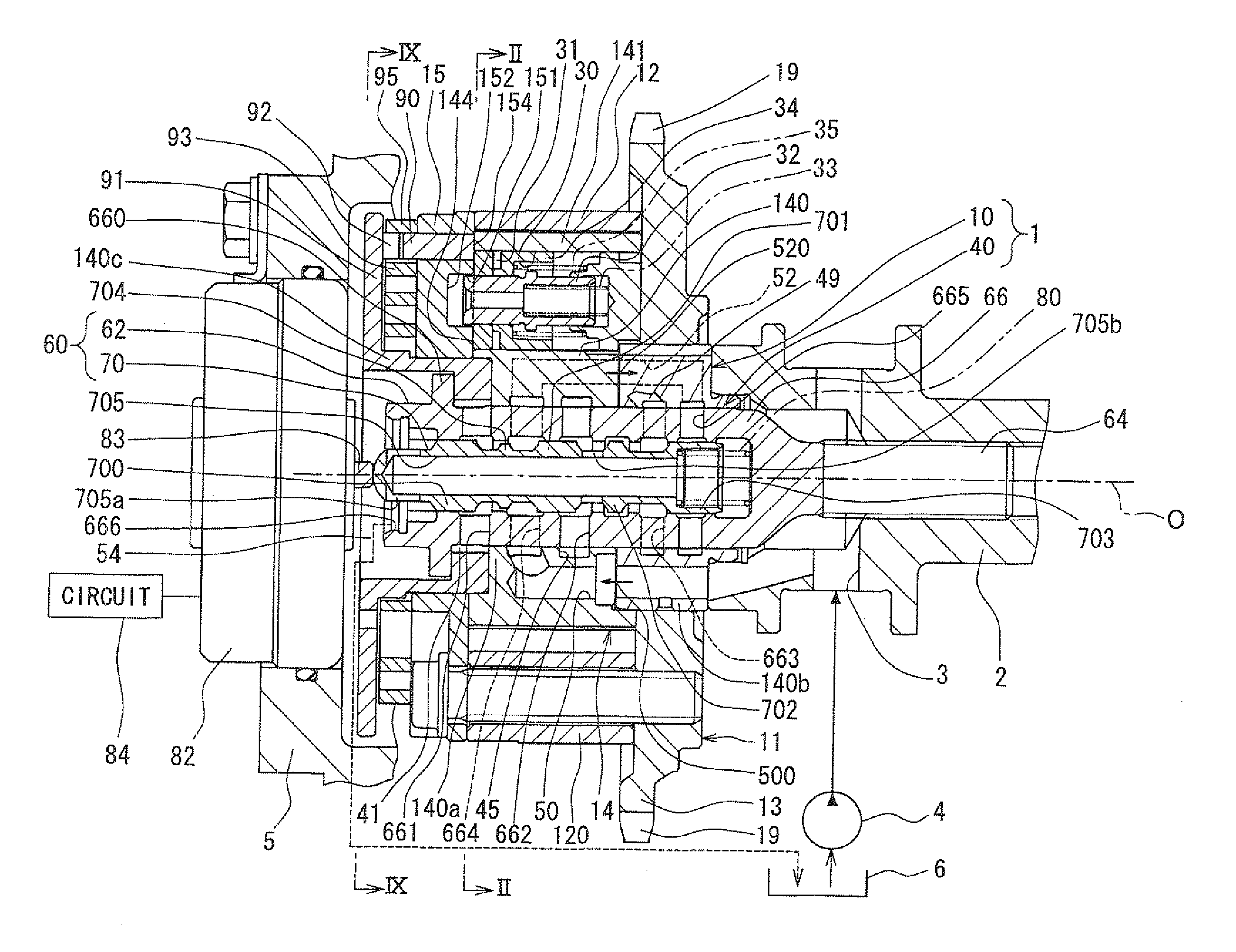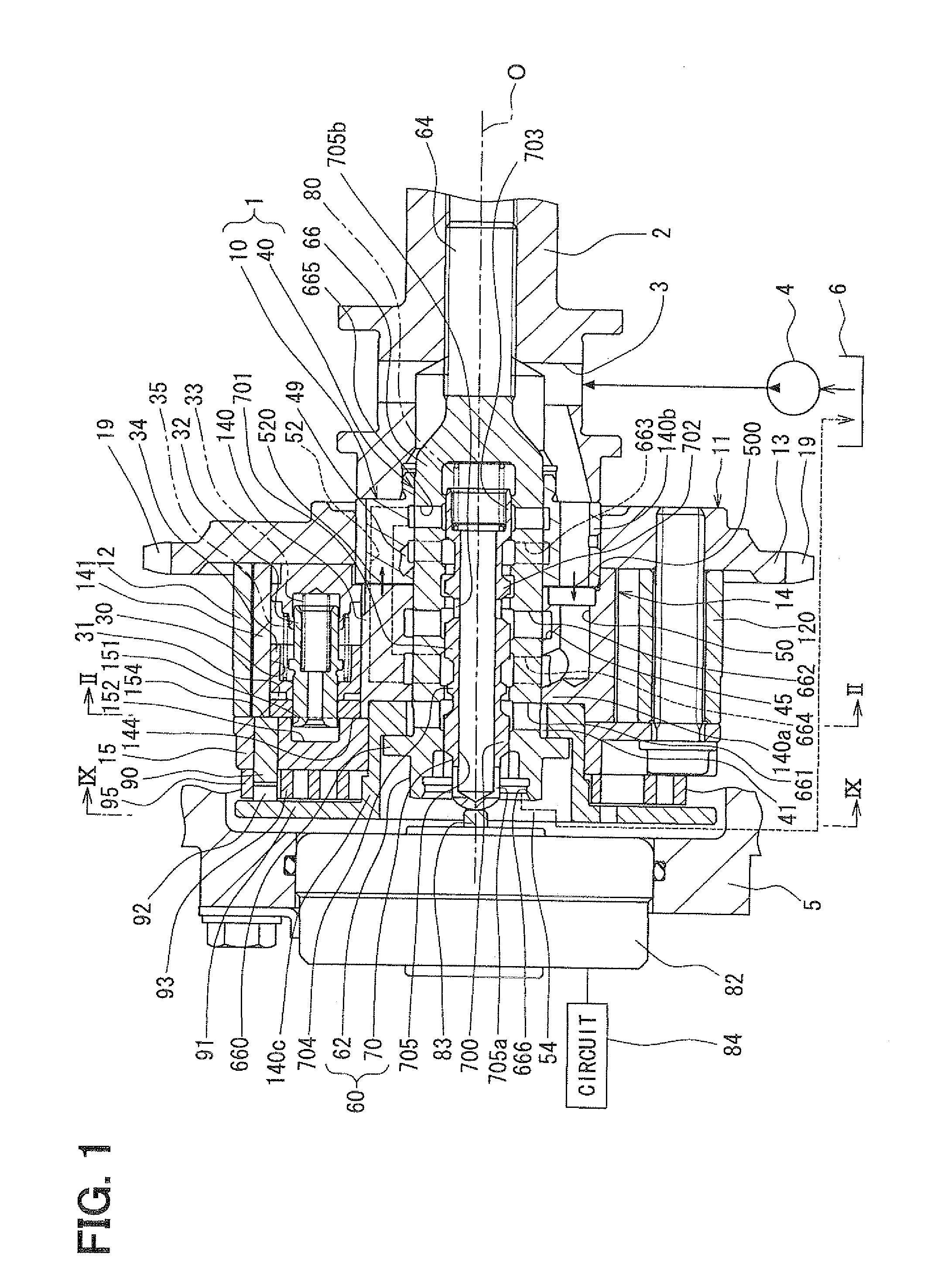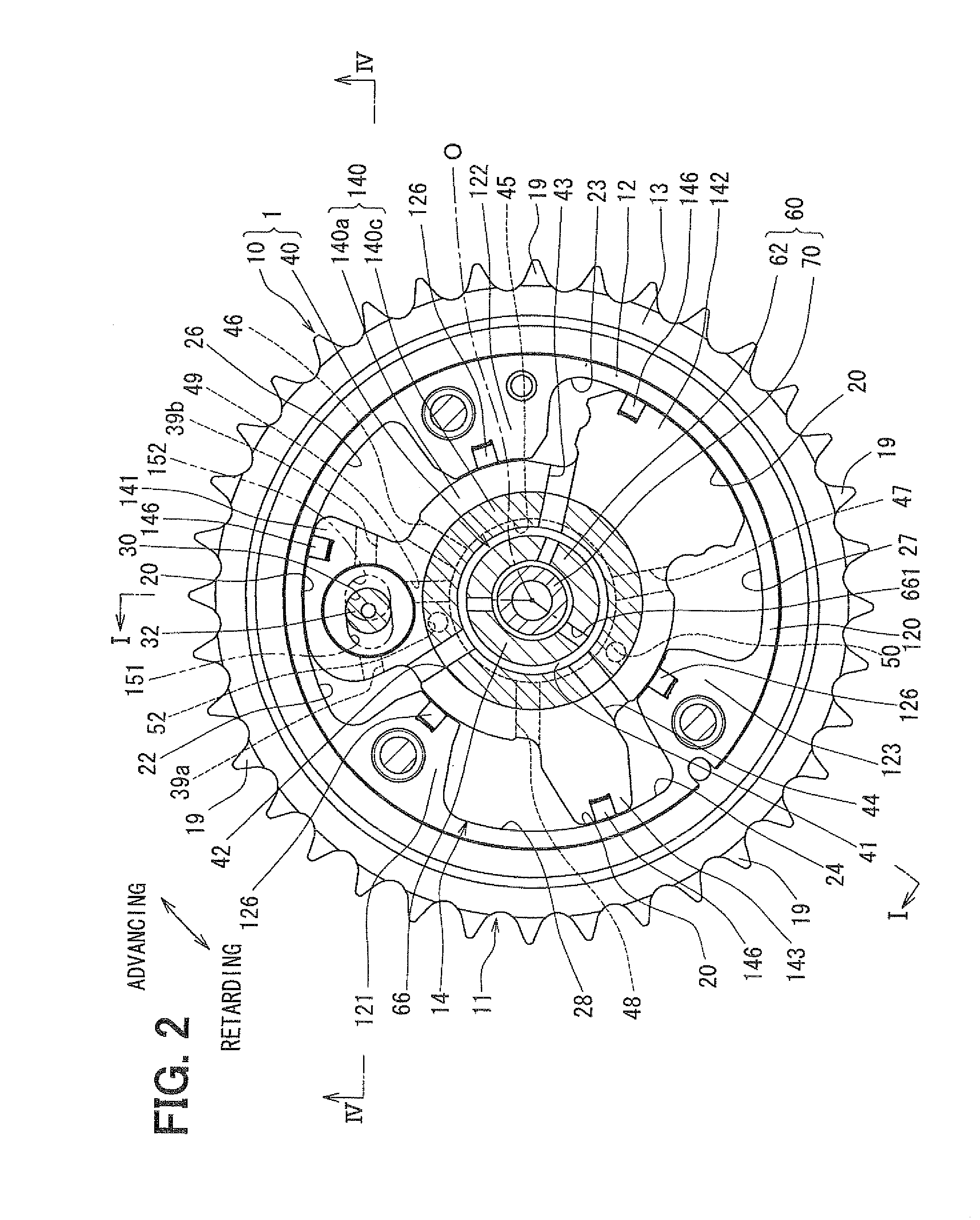Valve timing control apparatus
- Summary
- Abstract
- Description
- Claims
- Application Information
AI Technical Summary
Benefits of technology
Problems solved by technology
Method used
Image
Examples
Embodiment Construction
[0028]An embodiment of the present invention will be described with reference to the accompanying drawings. FIG. 1 shows a valve timing control apparatus 1 of the present embodiment installed to an internal combustion engine of a vehicle (more specifically, an automobile). The valve timing control apparatus 1 controls valve timing of an intake valve (serving as a drive-subject valve or simply referred to as a valve) through use of hydraulic oil (serving as hydraulic fluid). The valve timing control apparatus 1 includes a drive device 10 and a control device 40. The drive device 10 is placed in a transmission system, which transmits an engine torque from a crankshaft (not shown) to a camshaft 2. The drive device 10 is driven by the hydraulic oil. The control device 40 controls the supply of the hydraulic oil to the drive device 10.
[0029]In the drive device 10 shown in FIGS. 1 and 2, a housing 11 includes a shoe housing 12, a sprocket 13 and a front plate 15.
[0030]The shoe housing 12 ...
PUM
 Login to View More
Login to View More Abstract
Description
Claims
Application Information
 Login to View More
Login to View More - R&D
- Intellectual Property
- Life Sciences
- Materials
- Tech Scout
- Unparalleled Data Quality
- Higher Quality Content
- 60% Fewer Hallucinations
Browse by: Latest US Patents, China's latest patents, Technical Efficacy Thesaurus, Application Domain, Technology Topic, Popular Technical Reports.
© 2025 PatSnap. All rights reserved.Legal|Privacy policy|Modern Slavery Act Transparency Statement|Sitemap|About US| Contact US: help@patsnap.com



